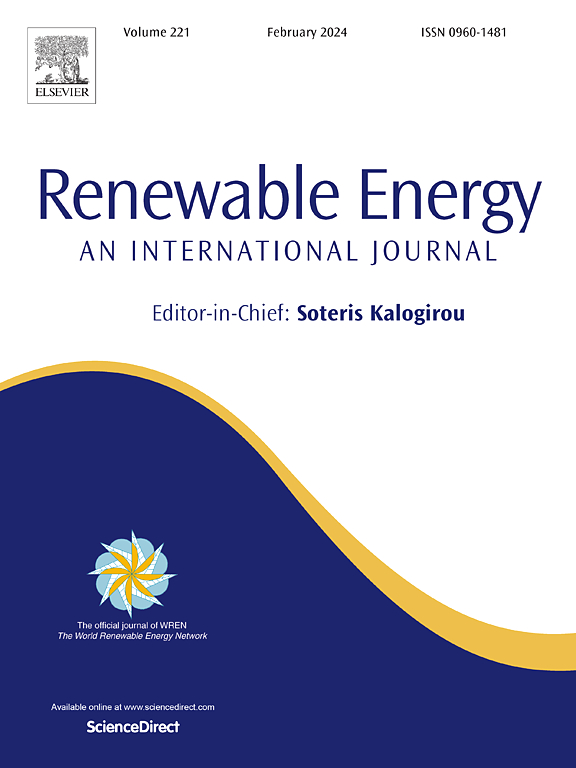Study on coupling mechanism of flow-heat transfer-chemical reactions and zonal optimization strategy in reformer
IF 9.1
1区 工程技术
Q1 ENERGY & FUELS
引用次数: 0
Abstract
To establish guiding principles for reformer structural design and develop corresponding design methodologies, it is essential to investigate the coupling mechanisms among flow, heat transfer, mass transfer, and chemical reactions within reformers under key parameters. Accordingly, a coupled flow-heat transfer model incorporating chemical reactions was developed and experimentally validated. Subsequently, the influence of operational parameters on reforming performance was systematically analyzed. Comparative studies indicate that optimal performance-characterized by high conversion rates and hydrogen production-is achieved at a flow rate of 15 mL/min, steam-to-carbon ratio (S/C) of 1.4–1.7, and wall temperature of 500 K. Analysis of intra-reformer coupling characteristics reveals distinct zoning in the axial growth rate of the Damköhler number (Da), which reflects the temporal distribution of flow and reaction processes. Based on this finding, the reformer channel was partitioned into three optimization zones, and tailored regulation strategies were developed for each zone. Furthermore, analysis of the Da and Lewis (Le) numbers reveals that while a high Da number remains critical for achieving superior conversion rates, optimal conversion efficiency can be attained when elevated mass diffusion rates are coupled with moderated thermal diffusion, corresponding to Le numbers in the range of 0.5–1.
转化炉内流动-传热-化学反应耦合机理及分区优化策略研究
为了建立转化炉结构设计的指导原则和相应的设计方法,有必要研究在关键参数下转化炉内部流动、传热、传质和化学反应之间的耦合机制。据此,建立了包含化学反应的流-热耦合模型,并进行了实验验证。随后,系统分析了操作参数对重整性能的影响。对比研究表明,在流量为15 mL/min、蒸汽碳比(S/C)为1.4 ~ 1.7、壁温为500 K的条件下,可获得高转化率和产氢率的最佳性能。对重整器内耦合特性的分析表明,Damköhler数(Da)的轴向增长率具有明显的区带性,反映了流动和反应过程的时间分布。基于这一发现,将重整通道划分为三个优化区域,并针对每个区域制定了量身定制的调控策略。此外,对Da和Lewis (Le)数的分析表明,虽然高Da数对于获得优异的转化率仍然至关重要,但当提高质量扩散速率并减缓热扩散时,可以获得最佳的转化效率,对应于0.5-1范围内的Le数。
本文章由计算机程序翻译,如有差异,请以英文原文为准。
求助全文
约1分钟内获得全文
求助全文
来源期刊

Renewable Energy
工程技术-能源与燃料
CiteScore
18.40
自引率
9.20%
发文量
1955
审稿时长
6.6 months
期刊介绍:
Renewable Energy journal is dedicated to advancing knowledge and disseminating insights on various topics and technologies within renewable energy systems and components. Our mission is to support researchers, engineers, economists, manufacturers, NGOs, associations, and societies in staying updated on new developments in their respective fields and applying alternative energy solutions to current practices.
As an international, multidisciplinary journal in renewable energy engineering and research, we strive to be a premier peer-reviewed platform and a trusted source of original research and reviews in the field of renewable energy. Join us in our endeavor to drive innovation and progress in sustainable energy solutions.
 求助内容:
求助内容: 应助结果提醒方式:
应助结果提醒方式:


